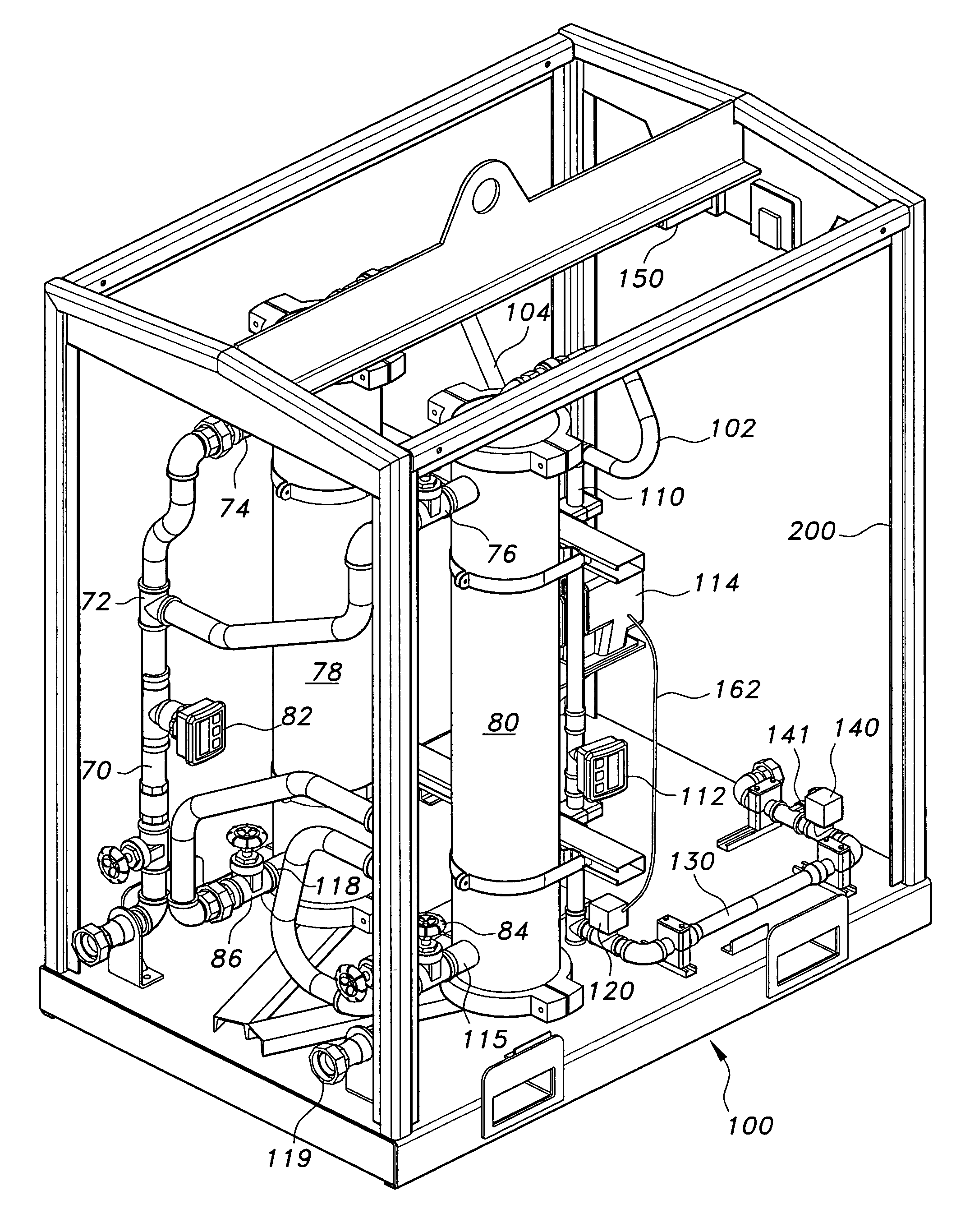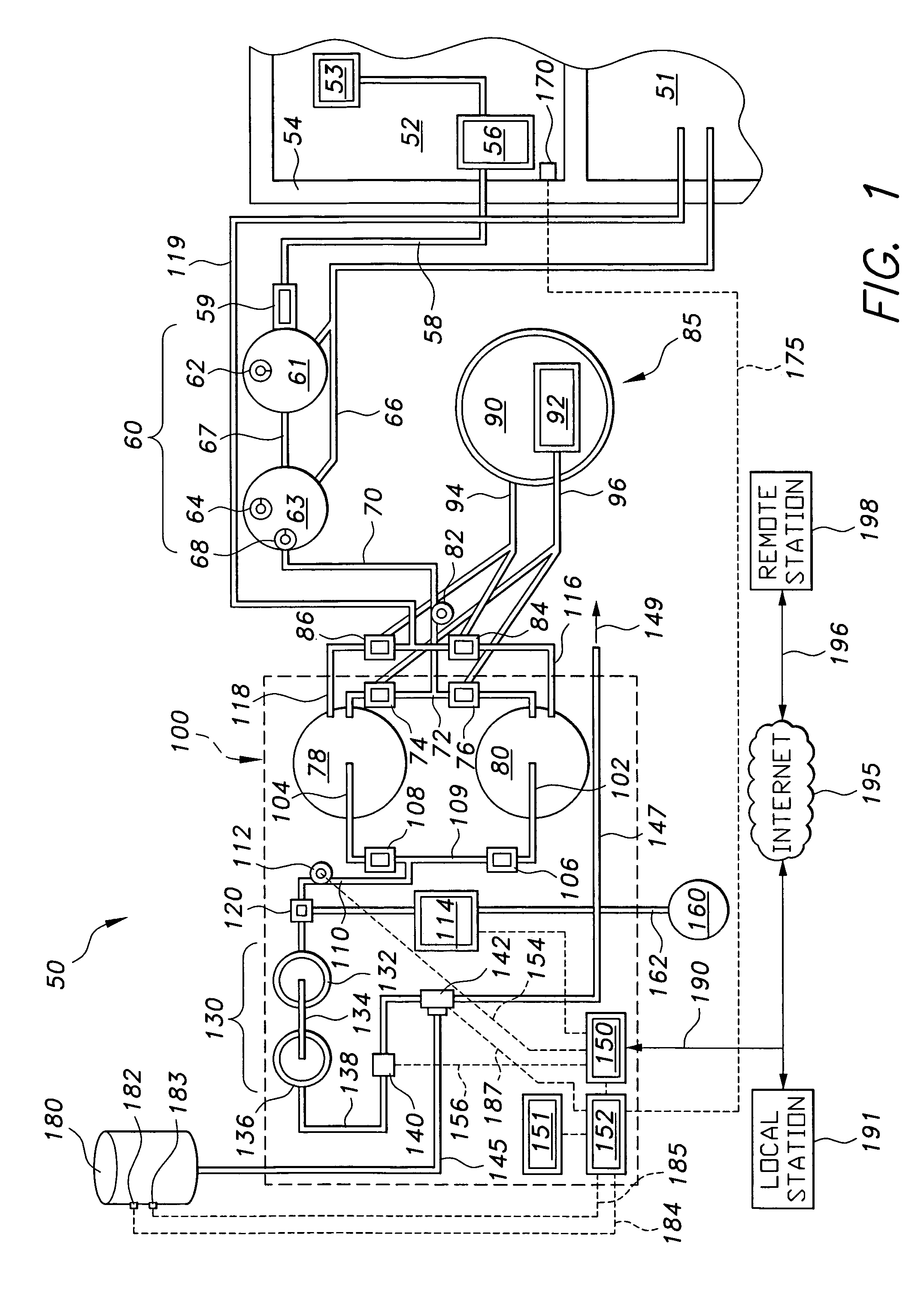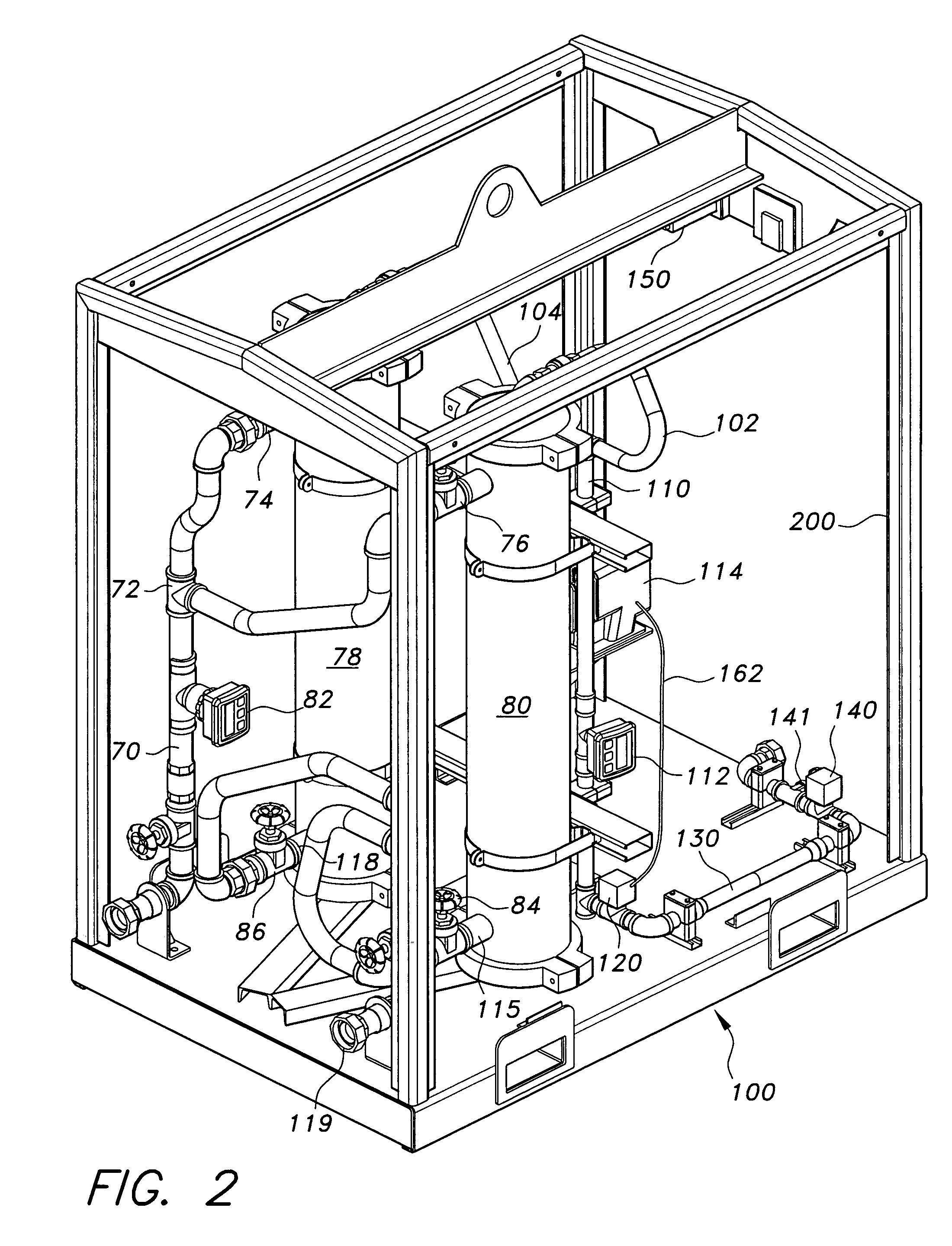Water treatment system
a water treatment system and water treatment technology, applied in chemical/physical processes, liquid-gas reaction processes, feed/discharge of settling tanks, etc., can solve the problems of fouling any known type of barrier media, difficult to remove entrapped cementitious materials, and ineffective traditional filtration methods utilizing barrier-type methods, etc., to reduce the ph level of permeation
- Summary
- Abstract
- Description
- Claims
- Application Information
AI Technical Summary
Benefits of technology
Problems solved by technology
Method used
Image
Examples
Embodiment Construction
[0025]FIG. 1 schematically represents an exemplary embodiment of a proposed contaminated water treatment system 50. Power distribution lines are not shown for clarity. Untreated, contaminated water containing entrained cementitious particles accumulates in a storage container such as settling pit 52, which may be a final settling pit downstream from a series of pits starting with drying pit 51, as is known in the concrete production industry. For example, there may be one or more intermediary settling pits (not shown) between drying pit 51 and settling pit 52. The pits are separated by pit wall 54 and a weir (not shown), allowing fluid to pass between adjacent pits.
[0026]Pump 56 draws fluid from settling pit 52. Pump 56 may be any type of pump known for drawing water from a reservoir. For example, a floating suction line may be used. The floating suction line keeps the suction line opening 53 at a measured distance below the surface of the water and avoids the buildup of solids on t...
PUM
| Property | Measurement | Unit |
|---|---|---|
| diameter | aaaaa | aaaaa |
| diameter | aaaaa | aaaaa |
| diameter | aaaaa | aaaaa |
Abstract
Description
Claims
Application Information
 Login to View More
Login to View More - R&D
- Intellectual Property
- Life Sciences
- Materials
- Tech Scout
- Unparalleled Data Quality
- Higher Quality Content
- 60% Fewer Hallucinations
Browse by: Latest US Patents, China's latest patents, Technical Efficacy Thesaurus, Application Domain, Technology Topic, Popular Technical Reports.
© 2025 PatSnap. All rights reserved.Legal|Privacy policy|Modern Slavery Act Transparency Statement|Sitemap|About US| Contact US: help@patsnap.com



